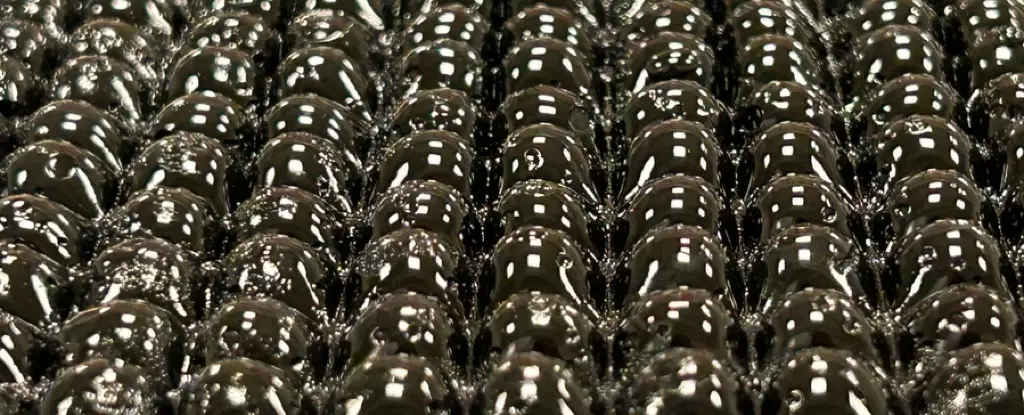In a world where billions struggle for clean drinking water, the race to innovate practical, accessible solutions is nothing short of urgent. Recently, a remarkable advancement has emerged from the laboratories of MIT: a black “bubble wrap” hydrogel designed to extract potable water directly from the air—no power source required. Tested in Death Valley, one of Earth’s harshest and driest regions, this device demonstrated surprising success by capturing over 50 milliliters of drinkable water daily. This seemingly modest amount might appear trivial at first glance, yet its implications could be profound if scaled effectively and distributed globally. However, while the promise is undeniable, this innovation also triggers skepticism about feasibility and real-world impact.
Technological Ingenuity Cloaked in Simplicity
The device’s core is a polyvinyl alcohol-based hydrogel combined with lithium chloride, glycerol, and black ink—a concoction meticulously engineered to absorb water vapor from dry air. The black ink enhances thermal management by cooling the outer surface, encouraging condensation, while lithium chloride acts as a water magnet. The hydrogel’s bubble-wrap morphology amplifies its surface area, improving water absorption efficiency. Unlike previous atmospheric water harvesters, which were either too slow or chemically compromised by contaminant leaching, this innovation supposedly avoids such pitfalls thanks to a tightly controlled microstructure and glycerol’s role in retaining salts. The ingenious simplicity here—passive operation without energy input—addresses a crucial barrier for deployment in under-resourced regions where even solar panels might be luxuries.
Promise Meets Practical Reality
Yet, one must not oversell the technology’s significance without acknowledging hard truths. Extracting roughly two ounces of water per day from air—while an engineering feat in Death Valley’s ultra-arid climate—is far from sufficient as a standalone solution for clean water access. An average adult requires at least two liters daily just for hydration, leaving this generator falling dramatically short. The researchers are upfront about this being a proof of concept, with many materials and design upgrades necessary to boost yield. Even so, scaling up devices like these to meaningful sizes would demand considerable investment, distribution logistics, and maintenance infrastructure—an often overlooked but critical aspect of humanitarian tech deployment.
Broader Context: Water Inequality Requires Systemic Solutions
From a more pragmatic perspective, innovations like this hydrogel panel cannot be viewed in isolation. The global water crisis is as much about political will, infrastructure, and equitable resource management as it is about technology. Undoubtedly, thousands of rural communities and conflict zones lack electricity grids and piped water, making decentralized, off-grid devices attractive. Nevertheless, no single gadget can “solve” water scarcity. Instead, technology must integrate with broader strategies such as reinvesting in water infrastructure, enforcing pollution controls, and addressing climate change-induced droughts—all items that require collective policy action alongside scientific advances.
Scaling and Accessibility: The Real Tests Ahead
The team’s ambition to deploy this technology in resource-limited settings is commendable but fraught with challenges. Manufacturing costs, durability, and local adaptability will determine if the panel becomes a lifeline or a neglected curiosity. Furthermore, without community engagement and proper training, even the best tech often fails to reach those most in need. The danger lies in promoting such inventions as silver bullets that can absolve governments and international bodies from investing in comprehensive water management. Instead, they should be viewed as complementary tools that empower individuals when integrated thoughtfully with social infrastructure.
A Necessary Step, But Far From a Panacea
While the atmospheric water harvester represents a creative leap forward in passive water generation, it serves as a stark reminder of the gulf between lab-scale breakthroughs and systemic water justice. It is one part of a complex mosaic needing urgency, innovation, and human-centered deployment. Cutting-edge materials and smart designs matter, yet without addressing the underlying socio-political structures dictating water distribution, the world’s water-challenged populations remain at risk. The black bubble wrap might open a small crack in the drought-stricken future, but only through persistent, multifaceted efforts can we hope to close the widening gap of water inequality.

